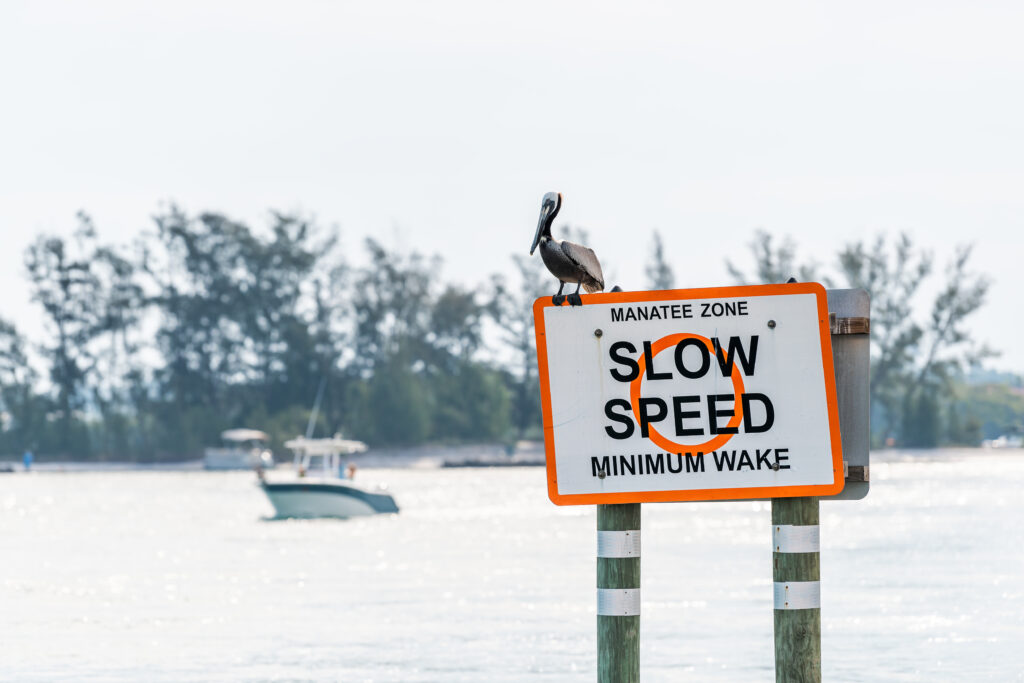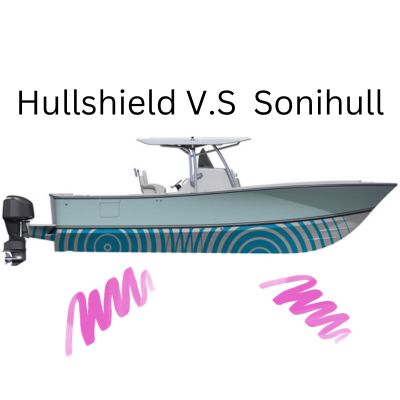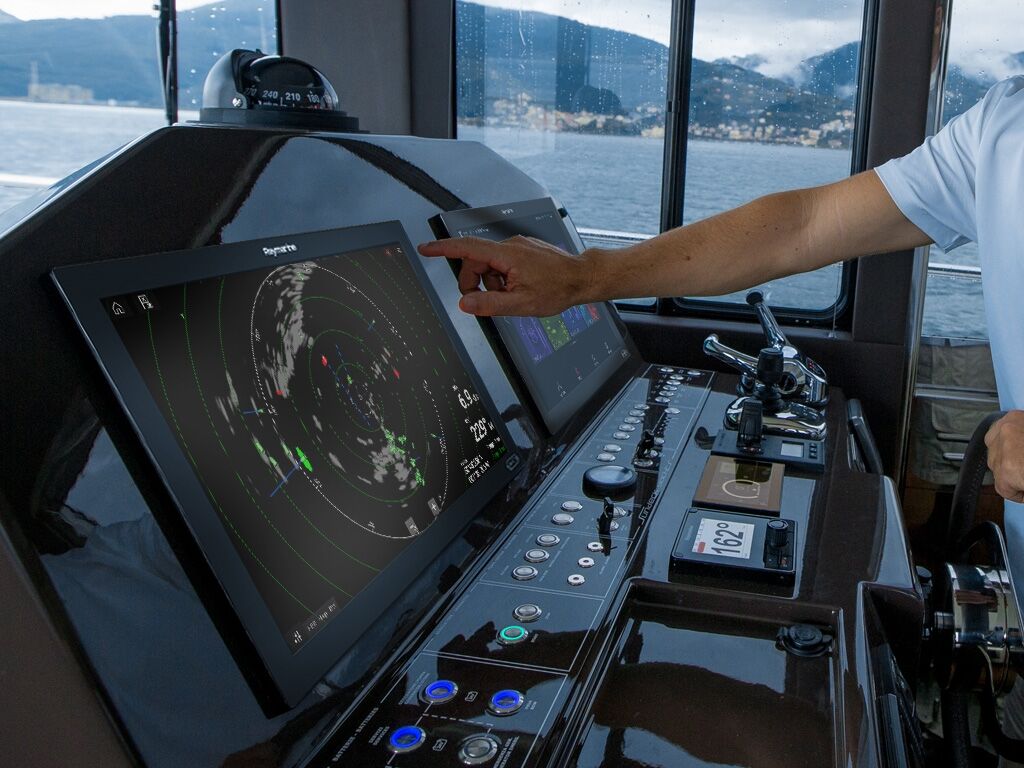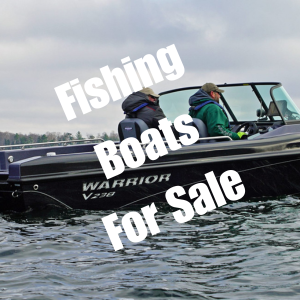Saltwater Fishing Boats
Saltwater Fishing Boats: Expert Guide to Choosing the Best Fit
Saltwater fishing boats are a specialized class of vessels designed to withstand the challenges of fishing in the open waters of the ocean. These boats come in various shapes, sizes, and designs to suit the needs of different anglers, whether they're exploring inshore waters or venturing far offshore for deep-sea fishing adventures. The right saltwater fishing boat can help you experience the thrill of the open sea while providing the necessary stability, comfort, and safety to make each outing a memorable one.
Understanding the different types of saltwater fishing boats is essential for making an informed decision when purchasing a new or used vessel. Inshore boats tend to be smaller and more maneuverable, while offshore boats are typically larger and more robust, designed to handle rougher sea conditions for an extended duration. Additionally, top brands and models offer various features and options that cater to specific fishing styles, preferences, and budget considerations.
When choosing the perfect saltwater fishing boat, it's crucial to understand the impact of engine types, onboard accessories, and electronics. A comprehensive buying guide can help you navigate these considerations, as well as provide tips on maintaining your boat, fishing techniques, and frequently asked questions to ensure you make the most of your saltwater fishing experiences.
Key Takeaways
- Saltwater fishing boats come in different shapes, sizes, and designs for inshore and offshore fishing.
- Top brands and models offer various features, engine types, and electronics to cater to specific needs.
- A comprehensive buying guide can help you understand boat specifications, maintenance, and fishing techniques.
Understanding Saltwater Fishing Boats
Saltwater fishing boats come in a variety of shapes, sizes, and designs, catering to different types of fishing enthusiasts. Comparing various models is essential when considering the purchase of a new boat. Understanding the differences between inshore and offshore fishing boats is crucial, as these are the two primary categories that distinguish saltwater fishing boats.
Inshore saltwater fishing boats are designed for fishing in shallower waters near the coastline. These boats are typically smaller, lighter, and more maneuverable. They are suited for targeting fish species such as redfish, speckled trout, and flounder. Some popular inshore boat types include flats boats, bay boats, and skiffs.
On the other hand, offshore saltwater fishing boats are built to handle deeper waters and rougher conditions, venturing farther from the shoreline. These boats are larger and more rugged, providing stability and comfort to handle big waves and long trips. Offshore fishing boats are perfect for targeting pelagic species such as tuna, marlin, and mahi-mahi. Common offshore boat types include center consoles, cuddy cabins, and sportfishers.
A key aspect to keep in mind when selecting a saltwater fishing boat is its features. Several factors contribute to a boat's fishing capabilities, such as large baitwells, rod storage, efficient trolling motors, and comfortable seating. Additionally, advanced navigation and fish-finding electronics contribute greatly to a successful day of fishing.
Choosing the right saltwater fishing boat ultimately depends on your preferences and the type of fishing you enjoy. Websites like and provide extensive information on various boat options, while houses boat reviews, boat pictures, and boat videos to make your decision-making process easier and more informed.
Taking the time to assess your specific fishing requirements and browsing through available options will help you find the ideal saltwater fishing boat for your adventures, ensuring you get the most out of your experience and investment.
Types of Saltwater Fishing Boats
Saltwater fishing boats come in various types and sizes, each designed to cater to specific fishing needs and locations. In this section, we'll explore the following types of saltwater fishing boats: Offshore Boats, Inshore Boats, Center Consoles, Walkarounds, and Cuddy Cabin.
Offshore Boats
Offshore boats are designed for fishing in deep waters, far from the shoreline. These boats are typically larger, more powerful, and built to withstand rough sea conditions. Most offshore boats are equipped with amenities like cabins, restrooms, and ample storage space for extended fishing trips. They provide a stable and comfortable platform for anglers targeting larger gamefish such as tuna, marlin, and swordfish.
Inshore Boats
Inshore boats, on the other hand, are designed for fishing in shallower waters close to the coast. They are usually smaller, lighter, and more maneuverable than offshore boats, making them ideal for navigating through tight spaces and shallow channels. Inshore boats are often used for targeting species like redfish, speckled trout, and snook in bays, marshes, and estuaries.
Center Consoles
Center console fishing boats are ideal for anglers seeking versatile and user-friendly vessels. They have controls mounted in or near the center of the boat, with ample deck space on all sides. These boats offer 360-degree fishability, making it easy for anglers to cast, fight, and land fish from any position. Ranging in size from 11 feet to over 50 feet, center consoles are popular for both inshore and offshore fishing.
Walkarounds
Walkaround saltwater fishing boats are a versatile option that combines the benefits of center consoles with additional comfort features. These boats provide a full walkaround deck, allowing anglers to fish from any side of the vessel. They also include a forward cabin for shelter and accommodation, making them suitable for extended trips. Walkarounds are suitable for a variety of fishing pursuits, from inshore efforts to offshore adventures.
Cuddy Cabin
A cuddy cabin is a small fishing boat that features a compact enclosed cabin at the bow. This space can be used for shelter, sleeping, or storage. Cuddy cabin boats are ideal for families or small groups of anglers, as they offer a balance between fishing functionality and onboard amenities. While they may not be as spacious as larger offshore boats, cuddy cabins provide a comfortable and affordable option for those seeking to enjoy both fishing and recreational activities on the water.
Top Brands and Models
Mako
Mako is a reputable brand in the saltwater fishing boat industry, known for producing high-quality, reliable vessels that appeal to anglers of all experience levels. One of their popular models is the Mako Pro Skiff 17 CC, which features an innovative "Advanced Inverted V" hull design that ensures a smooth ride and excellent stability. These boats are versatile and well-suited for both inshore and nearshore saltwater fishing.
Boston Whaler
Boston Whaler is another premium brand in the saltwater fishing boat market, offering a diverse range of models tailored to meet the unique needs of anglers. Known for their innovative designs and exceptional performance, Boston Whaler boats provide a smooth ride, remarkable durability, and excellent fishability. One popular model is the Boston Whaler Montauk 170, which is equipped with ample storage for tackle, rods, and safety gear, making it ideal for a day out on the water.
Grady-White
With over 60 years of experience in the industry, Grady-White is a renowned brand that produces top-quality saltwater fishing boats. Their vessels are known for their solid construction, smooth ride, and exceptional fishing features, making them a popular choice among avid anglers. Grady-White boats feature fiberglass hulls that are resistant to corrosion and easy to maintain, ensuring longevity and reliability for owners. One notable model is the Grady-White Canyon 271, which is specifically designed for offshore fishing, with plenty of storage, comfortable seating, and advanced technology for anglers.
These top brands - Mako, Boston Whaler, and Grady-White - consistently deliver high-quality, reliable fishing boats tailored specifically for saltwater anglers. With their innovative designs, premium materials, and attention to detail, they provide the tools and features needed for a successful day out on the water.
Decoding Boat Specifications
Length and Beam
When it comes to saltwater fishing boats, understanding their specifications is important to find the perfect fit for your needs. Two key measurements to consider are the length and beam of the boat. The length is the overall distance from the bow to the stern, while the beam refers to the widest part of the boat, usually measured at the midship. A longer, wider boat provides more stability and a better fishing platform, but it can also increase fuel consumption and require more storage space.
Power and Performance
The horsepower and overall performance of a saltwater fishing boat are significant factors to consider. The engine's horsepower will determine the boat's speed, acceleration, and ability to handle different sea conditions. Essential elements to consider when assessing power and performance include top speed, cruising speed, and fuel efficiency. A faster boat can reach fishing spots more quickly, while higher efficiency reduces fuel costs and increases the range.
Fuel Capacity
Lastly, the fuel capacity of a saltwater fishing boat is crucial, as it impacts the boat's range and operating costs. A larger fuel capacity allows for more extended trips and farther destinations, but it also adds weight and can increase fuel consumption. It's important to find a balance between fuel capacity and overall boat size to optimize performance and efficiency.
Engine Types and Their Impact
Outboard Engines
Outboard engines are a popular choice for saltwater fishing boats due to their ease of maintenance and versatility. These engines are separate units that consist of an engine, gearbox, and propeller, and are available in both gas and diesel models. Outboard engines can be easily trimmed up out of the water, preventing salt build-up and making them simple to clean. They are available in single or multiple configurations to suit various boat types and performance needs.
Inboard Engines
Inboard engines are situated within the hull of the boat, with only the propeller extending underwater. These engines are typically more powerful than outboard engines, providing greater speed and efficiency, which can be useful for larger vessels. Inboards are available in both gas and diesel models, offering a range of horsepower options. While the inboard engine can be more challenging to maintain due to its location within the boat, it is still preferred by some saltwater fishermen for its performance capabilities. Inboard engines can be found in both single and multiple configurations, providing a variety of power options for different boat types.
Diesel Engines
Diesel engines are known for their reliability, durability, and fuel efficiency, making them a popular choice for saltwater fishing boats. They can be found in both outboard and inboard engine types, offering a range of power options to suit individual needs. Diesel engines often provide greater torque compared to their gasoline counterparts, which can be beneficial when navigating rough seas or towing heavy loads. However, diesel engines are typically more expensive upfront and can require specialized fuel, making them a more significant investment for boat owners.
Boating Accessories and Electronics
When it comes to saltwater fishing boats, having the right boating accessories and electronics can greatly enhance your experience on the water. Equip your vessel with top-quality marine accessories and marine electronics to ensure a safe, successful, and enjoyable trip.
One essential marine accessory for your saltwater fishing boat is a chartplotter. A good chartplotter displays detailed maps of the water, enabling you to navigate through shallow or treacherous areas, locate fish-rich spots, and keep track of your favorite fishing locations. Many modern chartplotters also offer fishfinder capabilities, utilizing sonar technology to reveal fish locations and underwater terrain.
Investing in a multifunction display (MFD) is highly recommended, as it centralizes various functions in a single device, such as GPS, fishfinder, and radar data. An MFD makes it easy to monitor and control multiple systems onboard, streamlining your fishing experience and making it more efficient.
A reliable VHF marine radio is another critical component in saltwater fishing, keeping you connected with other boaters and emergency services. Regularly updating your vessel's safety gear, like emergency beacons and lifejackets, is also a smart practice.
Modern marine electronics integrate innovative technology and features, providing an edge during your fishing ventures. An example of this technological advancement is the use of a smartwatch to mark spots and control your boat while actively fishing. It's worth keeping an eye on new developments to further enhance your time on the water.
Lastly, consider outfitting your boat with an assortment of fishing gear and accessories, such as tackle boxes, lure containers, and rod holders. Efficiently organizing and storing your equipment helps make your fishing trips more enjoyable and productive. After all, being prepared is key to any successful saltwater fishing adventure.
Buying Guide for Fishing Boats
When considering purchasing a saltwater fishing boat, it's important to first define your budget and primary fishing preferences. This will allow you to focus on boats that best match your requirements and ensure a satisfying experience. There are various factors to consider such as price, type of seller, and additional costs such as dealer prep and freight.
The price of a boat depends on its size, features, and age. Make sure to compare different options within your budget. New boats generally offer the latest technology and better warranties, but pre-owned boats provide more affordable alternatives without sacrificing too much in terms of quality and performance. Regardless of the choice, always factor in additional expenses associated with the purchase, such as registration, insurance, and equipment.
When deciding between a dealer or a private seller, keep in mind that reputable dealers offer a higher degree of confidence in the boat's condition and often provide warranties and financing options. Private sellers may offer lower prices, but riskier transactions, requiring thorough inspections and research. Use resources like Discover Boating to locate a reputable dealer near you.
Dealer prep and freight costs vary depending on the size and location of the boat. These charges cover transportation, inspection, and preparation of the boat before you take possession. Always inquire about dealer charges beforehand and try to negotiate these costs whenever possible.
When browsing for boats, consider inshore vs. offshore fishing requirements and review specifications like hull design and engine power. Consult resources like Salt Water Sportsman's Fishing Boat Buyers Guide for expert opinions and recommendations.
In conclusion, carefully considering your requirements, researching options, and weighing the pros and cons of each type of seller will help you make an informed decision while buying a saltwater fishing boat. Proper planning and budgeting will allow you to enjoy many years of memorable fishing experiences in your new boat.
Maintenance and Storage
Slip
Storing your boat in a slip is a popular choice for saltwater fishing boats. This method involves renting a designated spot in a marina, where your boat is secured with lines and fenders to protect it from damage. Maintaining a boat stored in a slip needs regular attention, as it is exposed to saltwater and weather conditions. Make sure to clean the boat's hull frequently to prevent the buildup of algae, dirt, and salt deposits. Using a marine-grade boat cleaner specifically designed for boats is essential for effective cleaning.
Hoist
A hoist is an alternative option for boat storage, where your boat is lifted out of the water and stored on a rack or in a sling. This method protects your boat from the harsh effects of saltwater and can reduce the need for frequent maintenance. However, regular inspections are necessary to ensure the boat is properly supported and that no damage has occurred while being stored. If you decide on using a hoist, schedule at least an annual thorough cleaning of your boat to remove salt and contaminants, ensuring its longevity. Boat maintenance tips can provide helpful information on preserving your boat's condition.
Dry-Stack
Dry-stack storage is another effective method for saltwater fishing boats. Your boat is stored in a multi-level storage facility, protected from the elements, and reducing the need for regular maintenance. To keep your boat in top condition, perform regular inspections for signs of wear and tear, especially on the engine and propeller, and carry out repairs as needed. For boats stored in a dry-stack facility, it's crucial to conduct a proper engine flush by following appropriate saltwater boat maintenance guidelines.
Remember that, regardless of the storage method chosen, routine maintenance is necessary to ensure the longevity and performance of your saltwater fishing boat.
Fishing Tips and Techniques
Offshore Fishing
Offshore fishing can be an exhilarating experience, as it involves venturing into deep waters to target larger game fish such as tuna or marlin. One key aspect of offshore fishing is understanding how to locate productive fishing spots. Studying factors like water temperature, currents and the presence of baitfish can help in predicting where fish congregate.
Another important tip is to use specialized gear and tackle suited for the targeted species. For instance, using lighter gear for smaller fish like snook, and heavier equipment for stronger fighters like cobia. Setting the right fishing knots is vital as well, as it ensures a secure connection between the line and the lure.
When targeting specific species, it's crucial to know their feeding habits and preferred environment. For example, marlin are often found near underwater structures and temperature breaks, while tuna are attracted to areas with abundant baitfish.
Inshore Fishing
Inshore fishing typically takes place in shallower waters, such as bays, estuaries, and coastal flats. This type of fishing tends to target species like redfish and trout. A crucial inshore fishing tip is to become familiar with the local tide patterns and water movement, as these factors influence fish behavior and accessibility to certain fishing spots.
Inshore fishing often requires casting into tight spaces, so practicing accurate casting techniques can greatly increase fishing success. The use of live or natural baits, such as shrimp and minnows, can be advantageous, as they're more likely to attract fish species indigenous to the area.
It's advisable to use lighter tackle when inshore fishing, as it allows for better control and sensitivity when targeting smaller species. Additionally, learning how to properly read underwater structures, such as grass beds or oyster reefs, can greatly assist in locating fish population hotspots.
By following these offshore and inshore fishing tips, anglers can hone their skills and improve their chances of a successful saltwater fishing experience.
Comparing Saltwater and Freshwater Boats
When it comes to choosing a fishing boat, one important consideration is the environment you plan to use it in. There are distinct differences between saltwater and freshwater boats, which impact their performance, durability, and maintenance requirements.
Saltwater fishing boats are designed to handle the rougher conditions of ocean waters. Their hulls are built with a deeper V-shape, which allows them to cut through waves and provide a smoother ride. This hull design is essential for navigating larger swells and choppy waters commonly encountered in saltwater environments.
Freshwater fishing boats, on the other hand, typically have flatter hulls as they are designed for calmer waters such as lakes and rivers. These boats are often lighter, allowing for easier transportation and launch. The flatter hull design provides more stability in calm waters, making it perfect for fishing activities like trolling and casting.
One noteworthy difference between saltwater and freshwater boats is the materials used in construction. Saltwater boats need to be built using materials that can withstand the corrosive effects of saltwater. Manufacturers often use higher-grade aluminum or marine-grade stainless steel, along with specialized coatings, to protect against corrosion. Freshwater boats can be built with standard materials as they face less wear and tear due to the absence of salt.
Maintenance is another area where saltwater and freshwater boats differ. After usage in saltwater, it is vital to rinse and flush the boat with freshwater to remove any salt buildup and prevent corrosion. Regular cleaning and maintenance will keep your boat looking and performing at its best. Freshwater boats typically require less extensive cleaning and maintenance as they do not encounter salt.
When comparing saltwater and freshwater fishing boats, one should also consider the type of fishing gear and accessories required. Some equipment is designed specifically for saltwater usage, while others may be more appropriate for freshwater fishing. Identifying the right boat for your needs ultimately depends on where you plan to fish, your budget, and your personal preferences.
Frequently Asked Questions
What are the key features of a reliable saltwater fishing boat?
A reliable saltwater fishing boat must have certain features to ensure durability and performance. Flush-mounts for rod holders, made of either stainless steel or aluminum, provide a sturdy and secure option for holding your fishing gear 1. Additionally, stout construction is essential for withstanding the extra abuse that comes with fishing in saltwater environments 1. Other features such as adequate storage, comfortable seating, and a reliable engine are critical for a successful saltwater fishing experience.
How do inshore and offshore boats differ?
Inshore boats are generally smaller and lighter, designed for shallow water and close-to-shore fishing. They may have a flat or semi-V hull for better maneuverability in shallow waters. Offshore boats, on the other hand, are larger and designed for deep sea fishing, with a deep-V hull for better stability and smoother rides in rough waters. These boats usually have larger engines, powerful enough to handle oceanic conditions and big water.
What are the top-rated brands for saltwater fishing boats?
There are several top-rated brands known for creating quality saltwater fishing boats. Some of these include Boston Whaler, Grady-White, Pursuit, Everglades, and Viking 2. Each brand is known for its reliable construction, performance, and customer satisfaction.
How to properly maintain a saltwater fishing boat?
Proper maintenance of a saltwater fishing boat is crucial for its longevity and performance. Regular engine maintenance and oil changes are essential, as well as keeping the hull clean and free of saltwater residue. Additionally, washing the deck and bilge areas with freshwater after each trip helps prevent corrosion and preserve the boat's overall condition. Over time, it is also vital to inspect and replace any damaged or worn-out parts as needed.
What factors should be considered when buying a used saltwater fishing boat?
When purchasing a used saltwater fishing boat, several factors should be considered. First, inspect the boat for any signs of damage or excessive wear. Have a professional survey completed to verify the structural integrity of the boat. Check the engine's performance and maintenance history, and ensure all electronics are in working order. Finally, consider factors such as the boat's age, overall condition, and the reputation of the manufacturer to help determine if the boat is a good investment.
How does boat size affect the saltwater fishing experience?
Boat size plays a significant role in the saltwater fishing experience. Smaller boats offer a more intimate experience, allowing for casting in shallower waters and easier transport. However, smaller boats may be less stable in rough waters and provide limited space for storage and passengers. Larger boats provide more storage, space for additional anglers, and enhanced stability for tackling big waves and offshore fishing. Still, they may be less maneuverable and require more maintenance.
Footnotes
Specifications
Featured Brands
All Brands for Saltwater Fishing Boats
- Albemarle
- Albin
- Apreamare
- Aquasport
- Arima
- Arvor
- Bayliner
- Beneteau
- Bertram
- Blackfin
- Bluewater
- Boston Whaler
- C
- Cabo
- Campion
- Cape Horn
- Carolina Classic
- Carolina Skiff
- Caymas
- Century
- Cobia
- Concept
- Contender
- Custom
- Defiance
- Di Donna
- Donzi
- Edgewater
- Fountain
- Gamefisherman
- Glacier Bay
- Grady
- Grady-White
- Hatteras
- Henriques
- Hydra
- Hydra-Sports
- Intrepid
- Invincible
- Jeanneau
- Key West
- Luhrs
- Mako
- May
- May-Craft
- McKee Craft
- Menorquin
- Nitro
- North River
- NorthCoast
- Ocean Yachts
- Ocqueteau
- Orkney
- Parker
- Pathfinder
- Pioneer
- Polar
- Pro
- Pro Sports
- Pro-Line
- Pursuit
- Quicksilver
- Rampage
- Ranger
- Regulator
- Riviera
- Robalo
- Rodman
- Sailfish
- Sciallino
- Scout
- Sea Cat
- Sea Fox
- Sea Hunt
- Sea Pro
- Sea Ray
- Sea Sport
- SeaSport
- Seaswirl
- Seaswirl Striper
- Sessa Marine
- Shamrock
- ShearWater
- Silverton
- Skeeter
- Smartliner
- Southport
- Spartan
- Sportsman
- Stamas
- Striper
- Sundance
- Thunder Jet
- Tiara Yachts
- Triton
- Triumph
- Trophy
- Vegliatura
- Venture
- Vexus
- Viking
- Warrior
- Wellcraft
- World Cat
- Yellowfin






































































